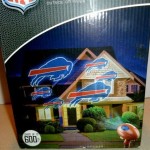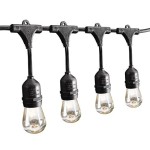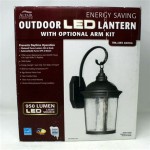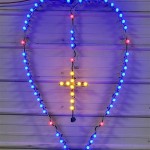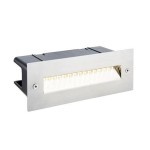Add PIR Sensor Outdoor Light
Outdoor lighting plays a crucial role in enhancing security, aesthetics, and functionality of a property. PIR (Passive Infrared) sensor lights automate this lighting system, offering significant advantages over traditional manual ones. Understanding the basics of PIR sensor lights, their installation process, and key considerations can help homeowners make informed decisions for their outdoor lighting needs.
Understanding PIR Sensor Lights
PIR sensor lights are designed to automatically activate when they detect motion within their range. They utilize passive infrared technology to sense changes in heat radiation. When an object, typically a person or animal, crosses the sensor's field of view, it triggers the light to illuminate the area. This feature provides a layer of security by illuminating potential threats and deterring intruders. Additionally, it enhances convenience by automatically switching on lights only when needed, conserving energy and extending the lifespan of bulbs.
Installation Process of PIR Sensor Lights
Installing a PIR sensor light typically involves the following steps:
- Choose the appropriate location: Select an area where the sensor has a clear view of the space it needs to monitor. Consider factors like potential obstructions, desired range of coverage, and the height of the fixture.
- Mount the fixture: Secure the light fixture to the wall or other mounting surface using appropriate hardware. Ensure that the fixture is level and properly anchored. Consult the manufacturer's instructions for specific mounting recommendations.
- Connect the wiring: Connect the fixture's wiring to the electrical supply according to the instructions provided. Make sure to turn off the power at the circuit breaker before working on any electrical components.
- Configure the sensor: Adjust the sensor's settings for sensitivity, delay time, and light output. These settings can be customized based on the specific needs of the location and user preferences.
- Test the installation: Once the wiring and settings are complete, test the sensor by moving around within its range to ensure the light activates and deactivates as expected.
Key Considerations for Selecting a PIR Sensor Light
There are several important factors to consider when choosing a PIR sensor light for your outdoor space:
Range and Coverage
The range of a PIR sensor determines the distance it can detect movement. Consider the size of the area needing coverage and select a sensor with a sufficient range. Some sensors offer adjustable coverage angles, allowing customization for specific needs.
Sensitivity
The sensitivity level dictates the amount of movement required to trigger the light. Higher sensitivity means the light will activate for smaller or less noticeable movements, while lower sensitivity requires more significant movement to trigger activation. Choose a sensitivity level appropriate for the location and desired responsiveness.
Delay Time
The delay time setting determines how long the light remains on after movement is detected. Short delay times are suitable for areas with high traffic or frequent movement, while longer delays are better suited for areas with less frequent activity. This setting can be customized to prevent unnecessary light activation.
Brightness and Light Output
Consider the desired brightness and type of light output needed for the location. Some PIR sensors offer adjustable brightness levels, allowing flexibility based on the specific lighting requirements.
Power Source and Energy Efficiency
PIR sensor lights can be powered by different sources, including electricity or batteries. Energy-efficient LED bulbs are highly recommended to minimize energy consumption and bulb replacement frequency.
Style and Design
Choose a fixture style that complements the overall aesthetic of your home and landscaping. Consider the size, shape, and finish of the fixture to ensure it blends seamlessly with your outdoor environment.
By considering these factors, homeowners can select the appropriate PIR sensor light to enhance security, convenience, and energy efficiency for their outdoor spaces.

Can You Add Motion Sensors To Existing Outdoor Lights Led Lighting Info

Auraglow Pir Motion Sensor Up Down Outdoor Wall Security Light Warminster Stainless Steel Led Lighting

Can You Add Motion Sensors To Existing Outdoor Lights Local Electrical Group

Can You Add Motion Sensors To Existing Outdoor Lights Led Lighting Info

Can You Add Motion Sensors To Existing Outdoor Lights Led Lighting Info

How To Wire Motion Sensor Occupancy Sensors

Can You Add Motion Sensors To Existing Outdoor Lights Local Electrical Group

Can You Add Motion Sensors To Existing Outdoor Lights Local Electrical Group

Black Pir Sensor Outdoor Wall Light Dunelm

How To Add Motion Sensor Outdoor Lights With Or Function Doityourself Com Community Forums
Related Posts
